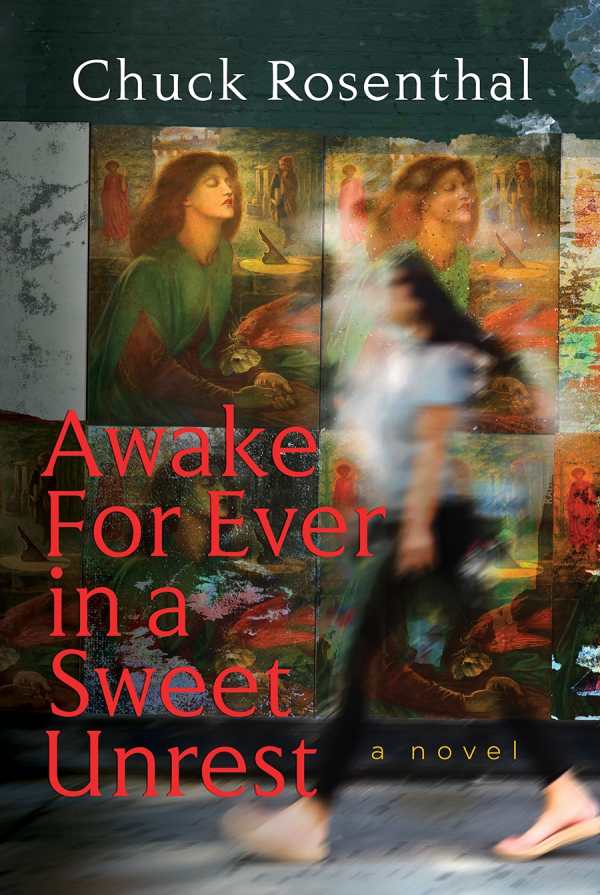Awake For Ever in a Sweet Unrest
In Chuck Rosenthal’s provocative novel Awake For Ever in a Sweet Unrest, a girl explores her connection to the Romantic poets.
Beatriz does unpaid work cataloging books in a basement library. There, the rows of books serve as portals that connect her to Romantic poets, including Percy and Mary Shelley and Lord Byron. But as Beatriz grows more reliant on her new friends, she starts to feel more at home in the nineteenth century than in the twenty-first.
Beatriz’s connection to the poets is used to reflect on the immortality of books. The writers she interacts with are pictures of vitality. And the prose is lyrical, rich in analogies and metaphors: the way a light falls is compared to the white wing of a swan; Beatriz’s fear is akin to that of a foal in front of an open corral gate. Complex conversations follow the same pattern, exemplifying the speakers’ varied vocabularies well.
Though their exchanges evade realism, Beatriz’s time with the poets is made tangible thanks to detailed descriptions, as of a garden full of fruit trees and the feeling of a warm summer breeze. Fewer details are shared about her twenty-first-century life; she is anchored in the past, and her present existence assumes an ethereal quality. After she undergoes pain and loss, she becomes sympathetic to her poet friends; Mary Shelley warns, “We’re all ghosts here, monsters, even you. Nothing lasts. If everything lasts forever, then yet nothing lasts. Only our longing.” Beatriz knows that she must seek closure.
In the allegorical novel Awake For Ever in a Sweet Unrest, a reader’s unlikely connections to the past illuminate questions about life, love, and books.
Reviewed by
Carolina Ciucci
Disclosure: This article is not an endorsement, but a review. The publisher of this book provided free copies of the book to have their book reviewed by a professional reviewer. No fee was paid by the publisher for this review. Foreword Reviews only recommends books that we love. Foreword Magazine, Inc. is disclosing this in accordance with the Federal Trade Commission’s 16 CFR, Part 255.

